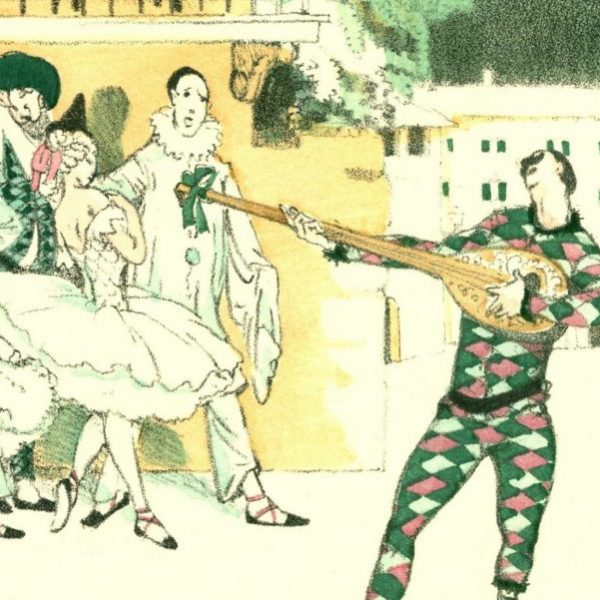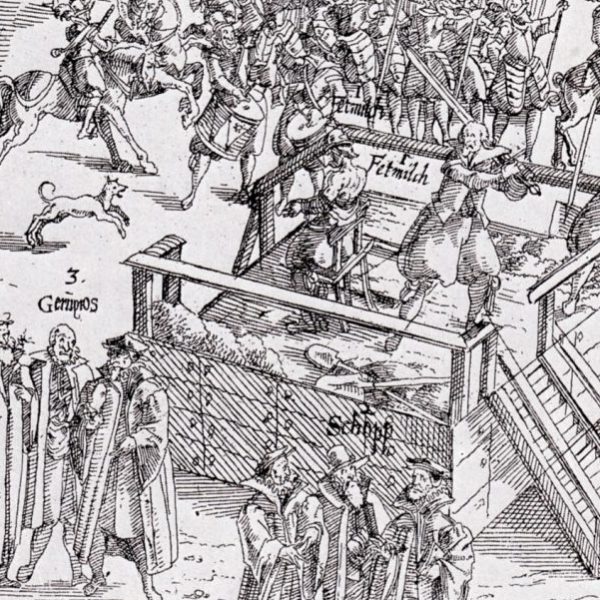Michael Haas on Forbidden Music
Follow Forbidden Music on Facebook!
From the Yale Books Blog:
Michael Haas‘s Forbidden Music: The Jewish Composers Banned by the Nazis, to be published in North America in June, explores the legacy of those musicians persecuted by the Third Reich. When National Socialism arrived in Germany in 1933, Jews were dominating music more than virtually any other sector, making it the most important cultural front in the Nazi fight for German identity. The party’s policy on music brought about a cultural holocaust, with far-reaching consequences for the history and development of music during the twentieth century. The conventional view is that the Third Reich’s rejection of atonality was an act of anti-semitism. Yet although Jewish musicians and composers were responsible for countless original ideas applied to both the popular and serious music of the day, as well as becoming the experimenters who would represent the starting point of the century’s most daring avant-garde, they were also by 1933 almost uniquely the principal conveyors of Germany’s historic traditions and the ideals of German culture. Here, Haas introduces the key ideas and individuals from Forbidden Music and describes their lasting contribution to musical history.
Michael Haas—
With the enormous interest in the Holocaust, it may seem superfluous to add to the literature already available. Yet music of specific Jewish authorship has strangely been missing from examinations of ‘Entartete Musik’ – or music condemned by the III Reich as ‘degenerate’. Greater interest has been accorded to the Nazi suppression of Modernism in its largely atonal and dodecaphonic guises. For a number of social and aesthetic reasons, this particular variant of Modernist music was, with a single quite notable exception (Arnold Schoenberg), rarely composed by Jews. Thus the music that was most frequently composed by Jews was paradoxically seen, post-1945, as part of a Romantic delusion that led Germany down a path that ended with its cultural destruction. In such a climate, the mere adherence to tonality itself was decried as ‘Romantic’. This position disregarded prevailing musical developments prior to Hitler, and it was these predominant movements within Modernism that offered the widest platform to young Jewish composers. The post-Hitler purge of anything that was viewed as representing a Nazi aesthetic dismissed such tonal tendencies as conventional though the composers who were thereby most affected had seen themselves as agitating protagonists within German music’s unique particularity.

Why Jewish composers would place themselves into such a position of specifically German cultural continuity has many complex historical and social explanations. These remain fairly constant even when dealing with the one Jewish composer who did shape 20th Century Modernism: Arnold Schoenberg. According to his pupil Hanns Eisler, he unleashed a revolution in order to become a reactionary. The relative short period during which German and Austrian Jews were granted parity with their non-Jewish compatriots resulted in a progression that began with cautious convention and continued through to an exuberant creativity that with Mahler, finally broke through the barriers of mere imitation. If Mahler converted to Christianity in order to gain his justified place in the sun, his successor Arnold Schoenberg would re-convert to Judaism as an act of cultural defiance. Following the years of emancipation, (officially starting with the constitutions of 1867 in Austria-Hungary and 1871 in Germany, though the process subsequently dragged through courts and parliaments), assimilation brought a cultural self-confidence that lasted a mere three and a half decades. Yet during this period, Jewish musicians, composers and writers came to dominate German and Austrian music to the point that the Nazi dictatorship declared it the principal cultural front in their battle for German identity.
An assumption today is that the adjective ‘German’ has always meant someone or something that comes from Germany. This definition, however, has existed only since the fall of Hitler in 1945. The fight for and over German identity had been raging since the Congress of Vienna; suppressed throughout the Metternich ‘Biedermeier’ years while flaring up again with the Revolution of 1848. With the expulsion of Austria from the ‘German Federation’ in 1866, German-speaking Austrians found themselves outside Bismarck’s emerging German nation state. It resulted in much bitterness as they saw Austria-Hungary with its myriad of Slavic holdings as a betrayal to their German birth-right. This brooding on exclusion was exacerbated with the refusal of the conquering French, British and Americans to allow the rump of German-speaking Austrians to fuse with the German Republic in 1919. The sense of being left-out not only created the deadly fanaticism of Adolf Hitler, but a sense of pan-German identification amongst many Jewish Austrians as well.
Yet the premonition of doom in Vienna pre-First World War resulted in a unique creative dynamism. If Paris in 1900 gave us the belle époque, Vienna contrasted this with fin de siècle. The differences are telling. The Expressionist apocalyptic works of Schoenberg, foretold in music, visions of the end of time. With the fall of the German and Austrian empires in 1919, many of Vienna’s principal Jewish composers moved to Berlin where they shaped an emerging avant-garde. As ‘early adaptors’, they became participants within the new media movements of cinema and broadcast. Years of living in closed communities gave many a quirky view of society, making them naturals as writers and composers of parody, satire, cabaret, revue and operetta. Others became political activists and such was the persuasiveness of their fight songs that with the arrival of the III Reich, marches by the Communist Hanns Eisler were simply taken over by the Nazis and kitted-out with new texts.
One of Wagner’s principal charges against Jewish composers and musicians was that they took refuge in the past. He saw Mendelssohn’s interest in Bach or Hanslick’s interest in music-history as a replacement for having something original to say. Yet it was precisely this fascination with the past that resulted in Heinrich Schenker and Guido Adler becoming fathers of different aspects of musicology. Such reverence for history resulted in a number of composers seeking new developments by exploiting models previously used by Classicists or the Baroque as a launching pad for their own ideas. Two of these were Hans Gál and Egon Wellesz who had completed their doctorates under Guido Adler. In the case of Gál, he solidified classical foundations in order to erect a new super-structure that was not only individual, but conformed and grew out of the familiar. With Wellesz, the principal was the same, though his template stemmed from the pageantry of the Baroque, allowing him to create new formats within ballet and opera and expand into highly expressive, often dissonant, free-tonal music, while keeping to historic ideals.
The casual racism expressed prior to the defeat of Hitler was usually based on culture with no biological foundations beyond a conjectured extrapolation of Darwinian ideas. Yet it was a racism that was just as often cited by Jews themselves as can be found in countless articles by the Zionist Max Nordau or the musicologist Adolf Weißmann. The fight for the German soul was fought on the sacred ground of Wagnerian Romanticism. Yet Romanticism, like its nihilistic, 20th century variant, Expressionism, was innately irrational and often at odds with the more sober world-vision of newly assimilated Jews. Nevertheless, because it was ‘sacred ground’, many prominent Jewish composers gravitated towards it. Before arriving at its natural Hollywood home, it dominated pre-Hitler musical debates with Hans Pfitzner’s notorious ‘Musical Impotence’ pamphlet, a confused mixture of Romantic nostalgia and overt anti-Semitism, as only a single example of the increasing paranoia felt by traditionalists. Yet most Jewish composers from these years felt comfortable with diatonic tonality, and saw it as a tool for developing new ideas. The post- 1918 mood of ‘New Objectivity’ was sober and a reaction against the manipulative powers of ‘Teutonic’ Romanticism and the neurotic hysteria of Expressionism. It was an aesthetic Zeitgeist that not only accommodated trendy operas offering props, sets and accoutrements with radios, jazz bands, flappers and police sirens, but also veered towards the purely mechanical, robotic and unemotional. The same aesthetic mood resulted in didactic works offering political and social ‘instruction’. It even included kooky experiments with engines and propellers. Whatever the development, the dominant goals among composers was the need to communicate, enlighten and to educate. It was what Alban Berg in a letter to Erwin Schulhoff referred to as ‘musical prose’ – direct communication without the obscurity of ‘musical poetry’.
From 1933, Nazi persecution of Jewish musicians and composers resulted in their re-ghettoization. They were forced into participating in Nazi societies and organisations that were founded in order to keep Jews from collecting unemployment benefits and out of non-Jewish, ‘Aryan’ venues. Emigration, exile and eventual self-reinvention resulted in a major break within the development of German music. It also caused irreparable damage to the development of many composers. New homelands rarely offered the receptive audiences of Germany and Austria and those who had made names for themselves before emigration were not usually in a position to regain the equivalent status abroad.
After the war, denazification resulted in compromises that left anti-Semites in positions of influence. It was impossible to rid the system of all of Hitler’s devotees without damaging the recovery of defeated nations already on their knees. Overt resentment, paranoia and fear for positions that had been held since the removal of Jewish colleagues, made full reconciliation impossible. Cold War politics also played a role, though to what extent is still debatable. It is certainly clear that the post-war avant-garde in the 1950s and 1960s had taken an unemotional and sobering turn similar to artistic developments post-1918. It was a development that excluded most Jewish composers who had enjoyed prominence prior to 1933. The denazification process of music reckoned atonality and dodecaphony as overt gestures of anti-fascist conviction, resulting in the unintended rejection of many of the most progressive Jewish voices prior to the arrival of the III Reich.
Yet the contributions that Jewish composers and musicians made to German music were ultimately very real and lasting. To state that Jewish cultural entitlement was delusional would chalk a victory up to Hitler. With the enforced exile of so many German standard-bearers, their inheritance has been spread across the globe and left unconsolidated and unrecognised. The intention with ‘Forbidden Music’ was therefore not to offer yet another book about the Nazis, but an examination of the music that was actually lost.
Michael Haas was producer of London/Decca’s recording series “Entartete Musik” and is presently research director of the Jewish Music Institute for Suppressed Music, SOAS, University of London. Forbidden Music is available now from Yale University Press, London, and will be published in North America in June 2013.



